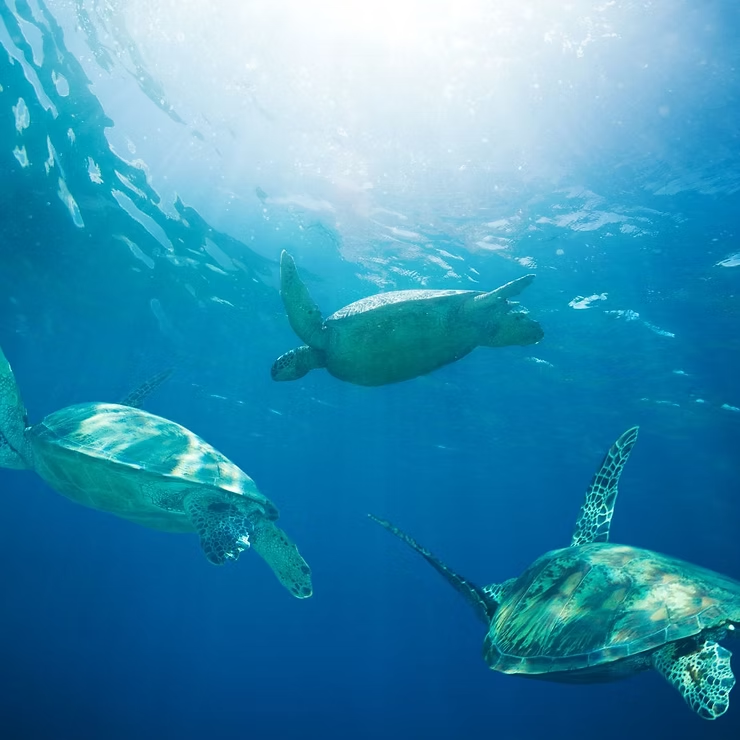The Epic Journeys of Marine Animals
The ocean is a realm of mystery where animals embark on journeys spanning thousands of miles. These migrations are not mere movements but complex behaviors shaped by environmental cues, biological needs, and ecosystem dynamics. From whales and krill to albatrosses and turtles, each voyage tells a story of resilience, survival, and adaptation in a changing ocean.
Whales and the Language of the Deep
Baleen Whale Communication
Baleen whales use distinctive vocalizations to stay connected during migrations and for courtship rituals. Each call acts like an acoustic ID card, traveling vast distances through the sea.
- Distinctive calls maintain pod cohesion
- Communication is critical for reproduction
- Noise pollution from ships and sonar disrupts communication
Listening to Giants
Scientists use hydrophones to eavesdrop on whales, studying their songs to decode behaviors. This research helps monitor the impact of climate change and human noise on migration and feeding patterns.
Krill: The Ocean’s Powerhouse
Life-Blood of the Sea
Though tiny, krill form the foundation of marine food webs, feeding predators from salmon to blue whales. Their abundance directly shapes predator migration routes.
- Heatwaves affect krill distribution
- Population shifts ripple through the ecosystem
- Declines impact salmon health and increase whale entanglements
Masters of the Wind: The Albatross
The Wind and the Wings
Albatrosses use wind currents to glide immense distances while timing their flights with upwelling events that boost prey availability. Their journeys reflect both skill and survival.
Technology and Threats
GPS tracking reveals migration patterns vital for conservation. Yet, longline fisheries continue to pose deadly risks, making bycatch reduction strategies essential.
Seals: Marine Nomads
Life on the Move
From pups on coastal rookeries to adult hunters, seals adapt continually to shifting seas. Human pressures, such as entanglement and habitat disruption, challenge their survival.
Conservation Efforts
- Marine protected areas safeguard rookeries
- Sustainable fishing practices reduce bycatch
- Technology like AI enhances monitoring of species such as manatees
Sea Turtles: Ancient Mariners
Navigation Across Oceans
Sea turtles migrate thousands of miles guided by Earth’s magnetic fields, sun, stars, and ocean currents. Despite threats like plastic pollution and habitat loss, they return faithfully to their natal beaches.
Sharks: Apex Predators on the Move
Routes and Ecological Roles
Sharks migrate using magnetic cues, temperature gradients, and food sources. Their movements sustain balance in food webs and promote genetic diversity. Overfishing and trade remain major threats despite bans.
Manatees: Gentle Giants
Tracking Their Meanderings
Manatees migrate in search of warm waters and seagrass beds. Researchers now rely on satellite tracking and AI recognition models to improve monitoring and protection.
Penguins: Waddling Wanderers
Cycles of Land and Sea
Penguins alternate between land breeding sites and months at sea. Their migrations regulate ecosystems by spreading nutrients and sustaining predator-prey balance.
Challenges of Climate Change
Shifting food sources, warming seas, and melting ice disrupt penguin survival strategies, placing pressure on populations and ecosystems.
Reflections on Ocean Highways
Marine migrations are epic tales of endurance and adaptation, linking ecosystems and species across the globe. Protecting these ancient routes means safeguarding the health of our planet and the life it sustains.
Frequently Asked Questions
How do whales communicate during migration?
They use long-distance low-frequency calls essential for feeding, reproduction, and navigation.
Why are krill important?
Krill are the foundation of marine food webs, sustaining fish, birds, and whales.
How do turtles navigate?
They rely on magnetic fields, currents, and celestial cues to cross oceans and return home.
What threatens albatrosses?
Bycatch from fisheries remains the greatest threat despite conservation efforts.
Why is shark migration important?
It maintains balance in food webs and signals the health of marine ecosystems.

